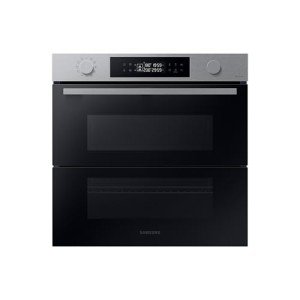The Rise of Built-In Ovens: A Seamless Approach to Modern Cooking
In contemporary kitchens, where design aesthetic appeals blend effortlessly with performance, one home appliance sticks out as a true game changer: the built-in oven. As integrated ovens uk and chefs alike continue to seek innovative services that boost their cooking experience, built-in ovens have become progressively popular. This short article checks out the benefits, considerations, and trends surrounding built-in ovens, highlighting why they are an important function in modern-day cooking areas.
What is a Built-In Oven?
A built-in oven is a cooking area home appliance created to be integrated into the cabinets of a kitchen area rather than standing alone. Unlike conventional freestanding ovens, which can be moved and positioned anywhere, built-in ovens can be found in various designs and sizes to fit particularly within designated areas. Available in single or double setups, these ovens offer a structured look that complements contemporary cooking area styles.
Advantages of Built-In Ovens
1. Space-Saving Design
One of the most appealing advantages of built-in ovens is their space-saving style. By integrating the oven into kitchen cabinetry, you can maximize valuable counter and floor space. This is especially helpful in smaller sized kitchens, where taking full advantage of space is vital. Built-in ovens can be set up at eye level, making them more accessible and decreasing the requirement to bend down.
2. Visual Appeal
Built-in ovens add to a sleek and cohesive kitchen area design. Offered in numerous surfaces-- such as stainless steel, black, white, and custom-made cabinets-- they can blend perfectly into the general decoration. This aesthetic appeal enhances the kitchen's visual consistency and elevates the area, creating a contemporary and sophisticated atmosphere.
3. Enhanced Functionality
Lots of built-in ovens come equipped with innovative cooking technologies, such as convection cooking, steam ovens, and wise functions. These improvements allow for flexible cooking options, making it much easier to accomplish professional-level results in the house. Smart built-in ovens can even link to Wi-Fi, making it possible for users to manage the oven remotely, get notifications, and access a range of cooking programs and recipes.
4. Enhanced Ventilation
Due to the fact that built-in ovens can be integrated with kitchen area hoods and ventilation systems, they can help preserve better air quality and lower cooking odors. This is specifically significant for those who enjoy to cook with aromatic spices and active ingredients, as an efficient ventilation system can keep the cooking area comfortable and welcoming.
5. Modification Options
Built-in ovens provide a vast array of customization choices to suit private cooking designs and needs. From professional-grade appliances with several cooking modes to compact styles for smaller sized kitchen areas, house owners can select the oven that fits their specific requirements. Many makers also provide customizable front panels, permitting you to match the oven's appearance to your cabinets for a genuinely combined look.
Considerations When Choosing a Built-In Oven
While built-in ovens have many advantages, there are important considerations to bear in mind before buying:
1. Rate
Built-in ovens generally feature a greater price than their freestanding counterparts due to their style and installation requirements. in built oven to consider both the expense of the oven and any additional costs associated with cabinetry modifications or setup.

2. Setup Requirements
Installing a built-in oven frequently requires professional support, especially if you require to modify existing kitchen cabinetry. Make sure that you think about any expenses associated with installation, including labor and prospective cabinets changes.
3. Size and Dimensions
Before buying a built-in oven, determine the designated space accurately to ensure a correct fit. Built-in ovens been available in different sizes and setups, so choosing one that lines up with your requirements and kitchen design is essential.
4. Way of life and Usage
Consider your cooking routines and requires when choosing a built-in oven. If you frequently host large events, a double oven might be more helpful. On the other hand, if you have a compact kitchen area, a single-wall oven may be enough.
Trends in Built-In Ovens
The cooking area home appliance market is constantly developing, and built-in ovens are not exempt from emerging trends. Some current patterns include:
Smart Technology Integration: With the rise of clever home technology, built-in ovens now typically include connection options. This enables users to keep an eye on cooking development and change settings via mobile apps.
Energy Efficiency: As sustainability ends up being a concern, many producers are investing in energy-efficient built-in ovens that reduce energy intake while preserving efficiency.
Multi-functional Designs: Built-in ovens now offer functions such as air frying, sluggish cooking, and steaming, providing adaptability that meets a wide range of cooking methods.
Conclusion
Built-in ovens undoubtedly represent an ideal mix of design, function, and convenience in today's kitchens. As more homeowners opt for this contemporary service, the focus moves to producing a cooking space that is as aesthetically pleasing as it is practical. Whether you are developing a new home or remodeling your kitchen area, considering a built-in oven could elevate your culinary experience and transform your kitchen area into an elegant and practical sanctuary. With a range of alternatives offered and continuous developments in innovation, built-in ovens remain a standout option for both amateur cooks and cooking lovers alike.
